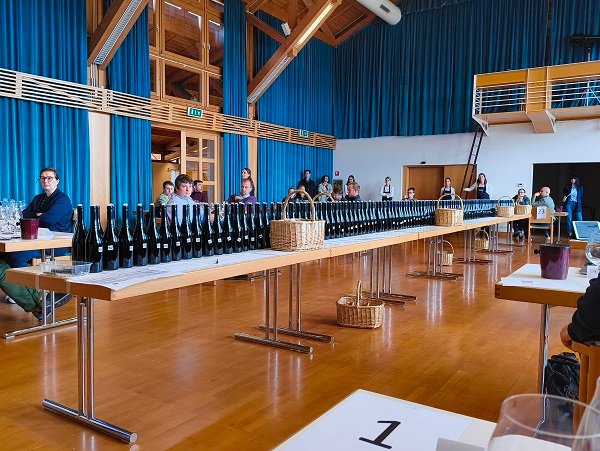As has been the case for several editions now, Stefania Vinciguerra participates in the jury of this Competition that crowns the best Italian Pinot Nero. Here she tells us how it works and how it went this year.
Pinot Nero enthusiasts in Italy are many, and it was from this axiom that 27 years ago, in South Tyrol, a group of producers decided to launch the event Blauburgunder Tage – Pinot Nero Days. (this year’s edition will be held May 16-19, also in Egna and Montagna). In later times, the organizing committee decided to complement the event with a competition which, preceding the days of the event, would enshrine the ranking of the best Pinot Noirs of the vintage under consideration (the one coming out on the market), an intriguing way to entice event participants to check the ranking, criticizing it or agreeing with it.


For the past few years I have been a member of the jury of the Competition which over the years has grown in number of samples and in representativeness. Beginning as a parade of wines from Alto Adige, it has been enriched with wines from all over Italy, particularly from Oltrepò Pavese (the Italian area with the largest area planted with Pinot Noir), but also from Piedmont, Valle d’Aosta, Friuli…
The competition is held with the collaboration of the Enology Section of the Laimburg Experimental Institute under the supervision of Ulrich Pedri, according to a method that guarantees the absolute anonymity of the samples tasted and the validity of the judgment of the individual tasters.
Here’s how it works

Having collected the samples from the wineries that accepted the committee’s invitation (this year there were 116 wines and the vintage under consideration was 2022), on the morning of the Competition each bottle is tasted beforehand by those in charge and for each wine a blend is made, that is, the various bottles of that wine are blended and re-bottled in anonymous numbered bottles. Each taster (we were 43, from various Italian regions with a few foreigners: journalists, sommeliers, and oenologists) has his or her own personalized tasting course, that is, no one tastes the wines in the same order, and 10 percent of the wines are repeated within the same course, so that each taster tastes some wines twice, of course without knowing it. Will they give the same judgment?

Scores are entered by each judge electronically within a system that, by averaging, at the end of the first day of tasting allows for the establishment of an initial ranking. On the second day the wines that received the best scores, at the rate of 25 percent of the total.
Vintage 2022
As mentioned, the vintage under tasting this year was 2022, a decidedly hot year with often extreme weather conditions, including prolonged drought and high temperatures. In general, therefore, the wines were warmer, richer and softer. With due stylistic and territorial differences, the wines still showed a good balance of acidity, tannins and structure, promising good longevity and complexity.
I personally found the average level to be higher than last year, but it must be said that the wines change from year to year and it is not certain that the producers present are the same.
The winners
The overall winners of the competition are:
- Elena Walch. Alto Adige Pinot Nero Ludwig
- Castelfeder, Alto Adige Pinot Nero Riserva Burgum Novum
- Kellerei Cantina Girlan, Alto Adige Pinot Nero Riserva Trattmann
- ex-aequo:
- Cantina Tramin, Alto Adige Pinot Nero Riserva Maglen
- Kellerei Terlan, Alto Adige Pinot Nero Riserva Monticol
Instead, these are the regional champions:
- Aosta: Grosjeans Vins (one of my favorites)
- Friuli: Castello di Spessa
- Lombardia: Conte Vistarino
- Piemonte: Bricco Maiolica
- Sicilia: Feudo Arancio
- Toscana: Fattoria di Cortevecchia
- Trentino: Maso Cantanghel
- Umbria: Torre Bisenzio
- Veneto: Borgo Stajnbech
The following producers reached the finals (in alphabetical order)
Cantina Furletti, Cantina Mori Colli di Zugna, Castel Sallegg, Falkenstein, Ferruccio Carlotto, Josef Weger, Kellerei Bozen, Kellerei Eisacktal, Kellerei Kurtatsch, Kollerhof Mazon, Malojer – Gummerhof, Manincor, Pfitscher, Salurnis, Schreckbichl – Colterenzio, Weingut Ploner, Weingut Peter Sölva, Weingut Pitzner, Weingut Seeperle, Weingut Tenuta Rohregger.




